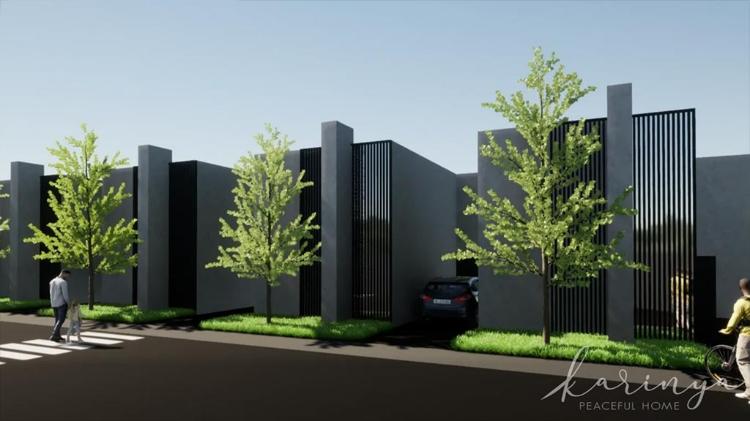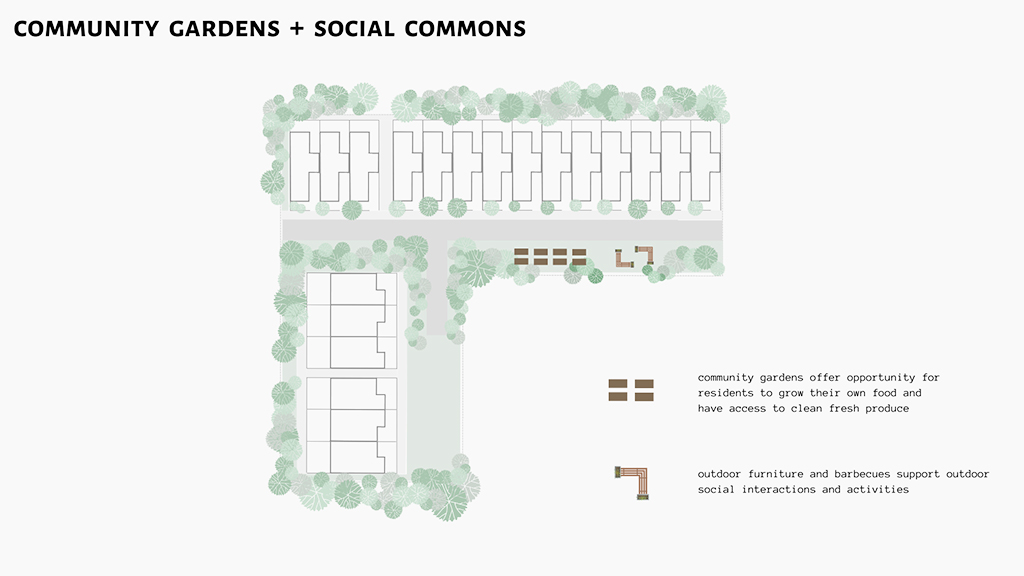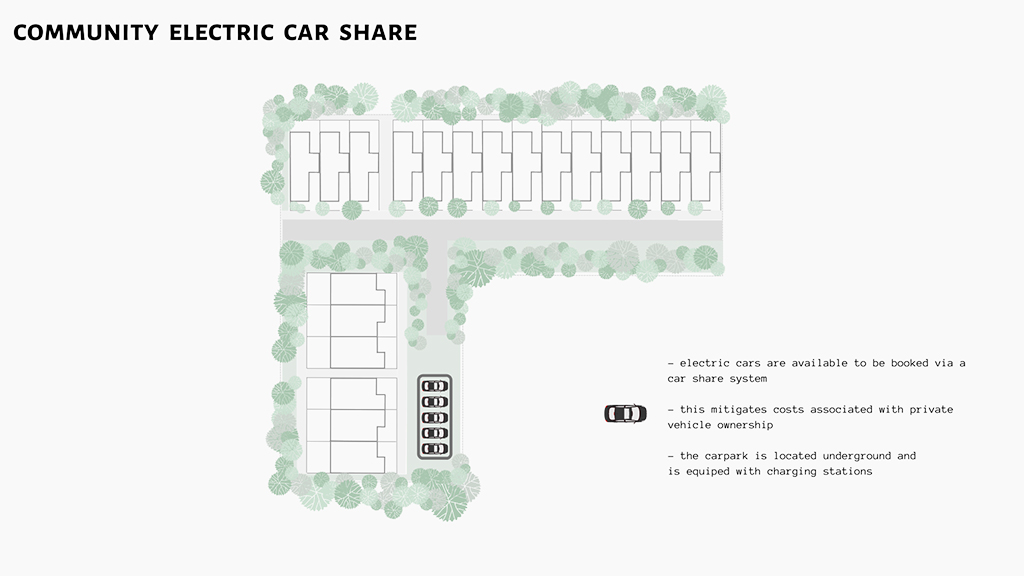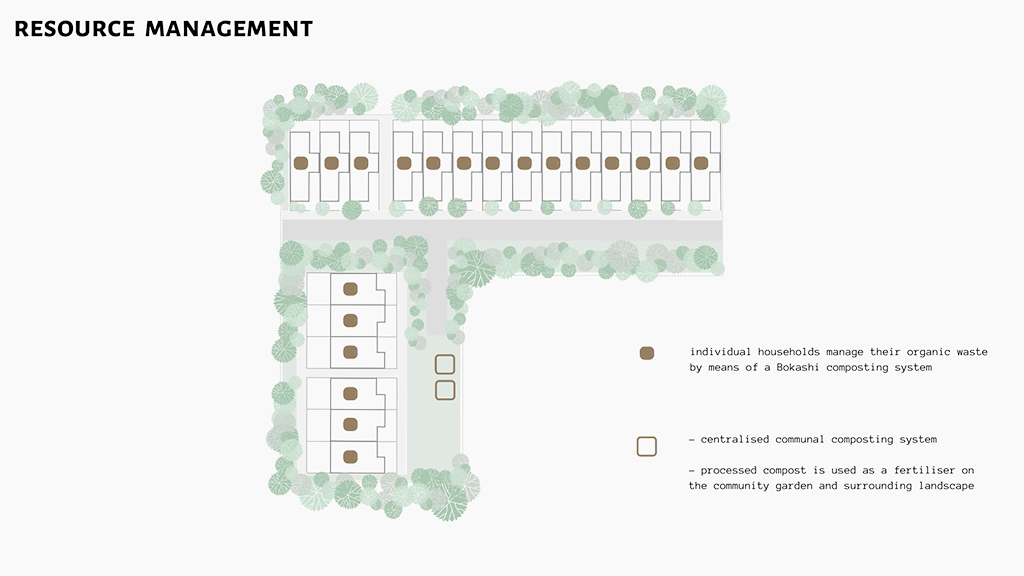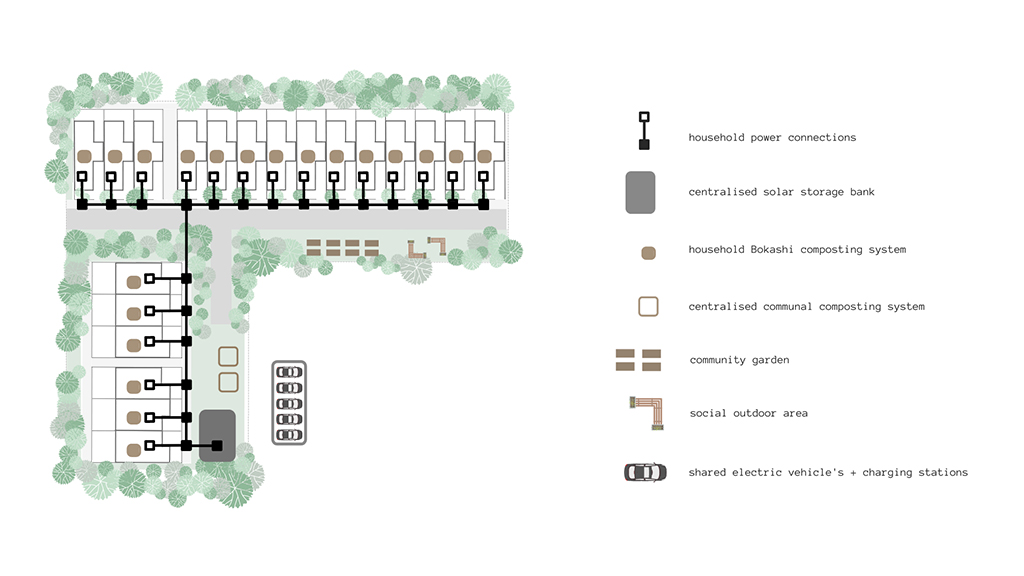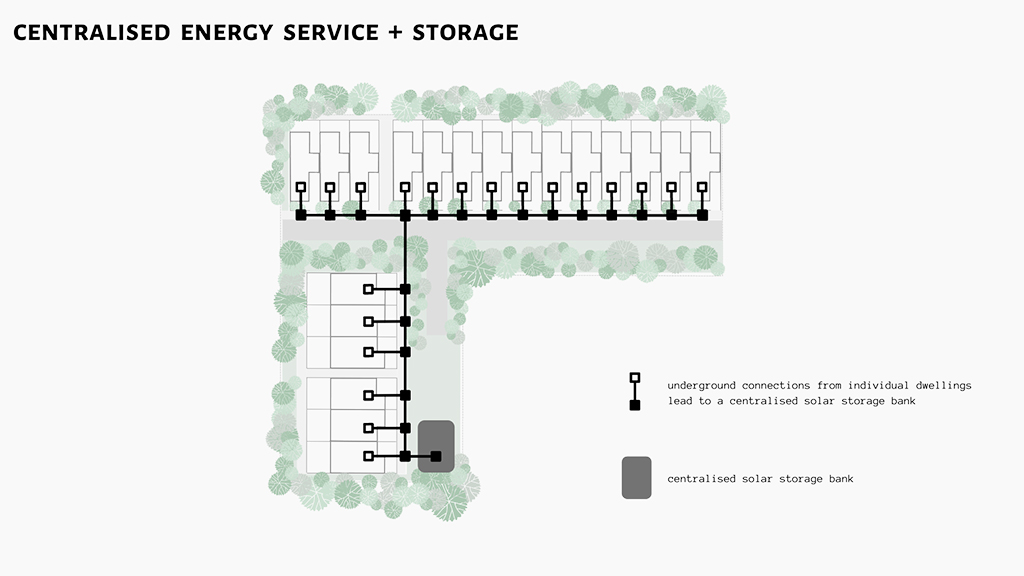Materials and Prefabrication
KARINYA’s use of rammed earth allows building materials to be sourced from the site, minimising costs of waste disposal and building material purchase.
KARINYA has been designed as a scalable community, maximising savings through uniformity of material use and construction methods across the site.
Prefabrication of walls offside maximises building efficiency, utilising materials that are durable and cost-efficient, ensuring comparable cost savings to traditional masonry.
Government Rebates
An energy-efficient home, KARINYA attracts current NSW Energy Efficiency rebates through the Virtual Powe Plant program3. A community that will be retained by the provider, KARINYA’s capacity to export excess electricity to the grid will earn feed-in tariffs for the community housing providers for the lifetime of the building, simultaneously minimising power costs for tenants.
Energy Efficient Cars
Incorporating energy-efficient cars, charging points within each home and a Housing Trust managed car pool onsite as a service to the occupants, at the time of design each car within the fleet would attract a rebate by the NSW Government through their Electric Vehicle Strategy. Further savings are achieved through charging cars onsite through cost-neutral, self-generated power.
Building Lifetime Savings
Designed for a community housing provider, KARINYA’s design purposely maximises tenancy, without renovation. Suitable for a large family and multigenerational living, KARINYA changes with the occupant, removing renovation costs and waste between tenancy.
Without alteration, KARINYA can transition to three independent living areas providing a co-living home, conscious of the increasing demographic of older women in the Illawarra experiencing housing insecurity and social isolation.
Savings Increase Services to Tenants
Minimising operational costs during the building lifetime, and by designing for occupant self-sufficiency, KARINYA maximises the opportunity for the Community Services provider to offer residents services and scholarships, supporting them to live in a home and belong to a community. The Housing Trust strategic plan 2018 – 2021 details the scholarships and support they provide community members. Designing a home that addresses isolation, access to cars, disability access and access to the community within the design, KARINYA Housing Trust aligns with its long-term vision, and is replicable across its future portfolio.



